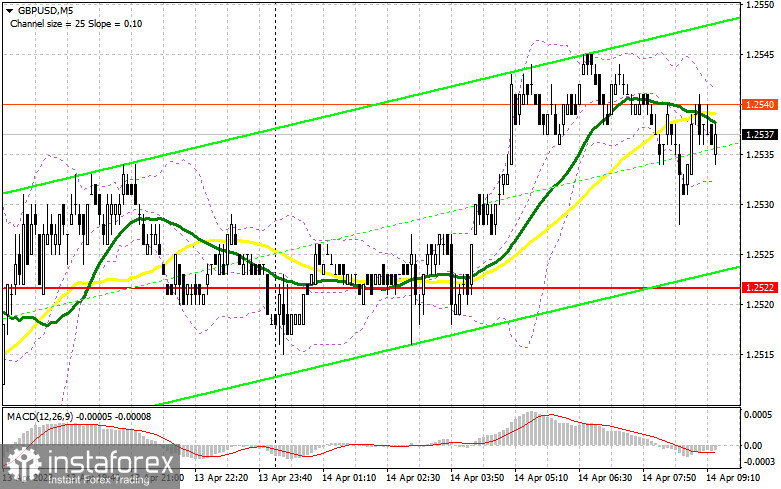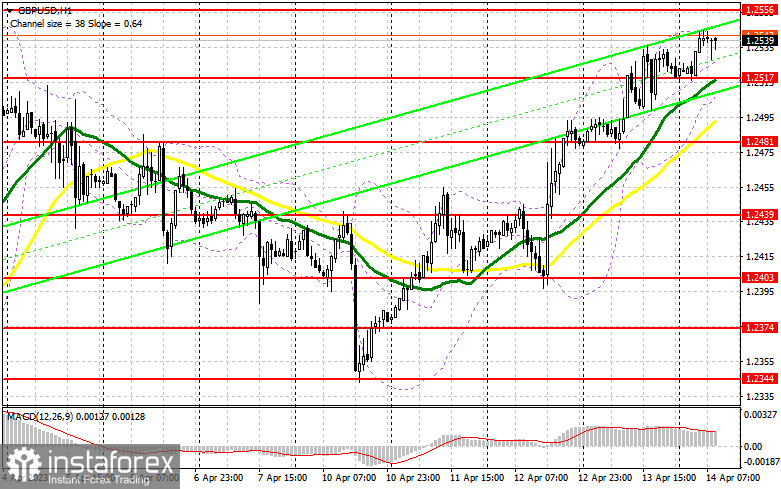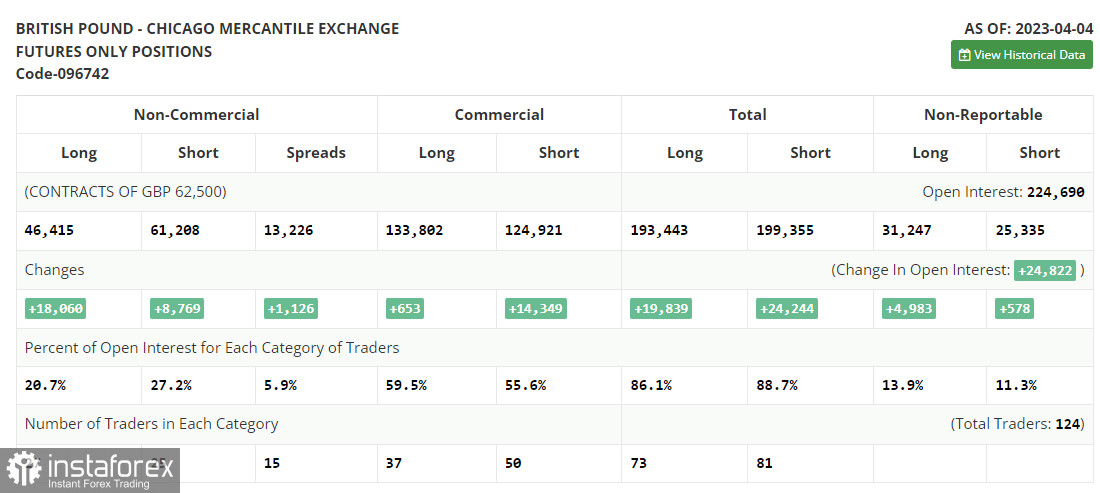Yesterday, there was only one signal. Now, let's look at the 5-minute chart and figure out what actually happened. In my morning article, I turned your attention to 1.2512 and recommended making decisions with this level in focus. A rise and a false breakout of 1.2512 generated a sell signal. However, as you can see on the chart, there was no large downward movement. After consolidation above 1.2512, I decided to close short positions. In the afternoon, there were no suitable entry points.

When to open long positions on GBP/USD:
Apart from the speech of BoE policymaker Silvana Tenreyro, there are no crucial economic reports for the UK. So, sellers may regain control of 1.2517. Bulls will try to prevent it. For this reason, I expect a decline in GBP/USD to 1.2517 in the morning. One should go long only if there is a false breakout of this level. It will give a good entry point into long positions with the prospect of a rise to a new monthly high of 1.2556. A breakout and a downward retest of this level could create another entry point into long positions with the possibility of a jump to 1.2592 where I recommend locking in profits. A more distant target will be the 1.2627 level. However, the pair is unlikely to reach it this week even in the case of weak US data. If GBP/USD declines to 1.2517, where the moving averages are passing, and the bulls show no activity, it is better not to rush into purchases until a false breakout of the support level of 1.2481. You could buy GBP/USD at a bounce from 1.2439, keeping in mind an upward intraday correction of 30-35 pips.
When to open short positions on GBP/USD:
Sellers need to defend 1.2556. If they fail, it will boost the bullish trend. As the economic calendar remains empty, there is a high chance they could protect this level. A false breakout of 1.2556 could trigger a correction to 1.2517, where the moving averages are benefiting the bulls. The pair could enter the sideways channel if it decreases to this level after a false breakout of a monthly high. A breakout and an upward retest of 1.2517 against the background of the dovish rhetoric of BoE policymakers will increase pressure on the pound sterling, giving a sell signal. The pair could fall to 1.2481. A more distant target is seen at a high of 1.2439. However, it will hardly hit this level today. If GBP/USD rises and bears show no energy at 1.2556, which is quite likely, I would advise you to postpone short positions until the test of a high of 1.2592. Only a false breakout of this level will give an entry point into short positions. If there is no downward movement there, you could sell GBP/USD at a bounce from 1.2627, keeping in mind a downward intraday correction of 30-35 pips.

COT report
The COT report for April 4 logged an increase in both long and short positions. However, it did not significantly affect the downward correction of the pair. Judging by the charts, it is gradually coming to an end. This week, the UK will unveil its GDP data which may facilitate the bullish sentiment. Hence, the pair could return to monthly highs. There will be no speeches from BoE policymakers. Therefore, traders will focus on US inflation and retail sales data. The US dollar may regain the upper hand following the release of these reports. The latest COT report showed that short non-profit positions increased by 8,769 to 61,109, while long non-profit positions jumped by 18,060 to 46,415. It led to a sharp decline in the negative delta of the non-profit net position to -14,793 against -24,084 a week earlier. The weekly closing price rose to 1.2519 against 1.2241.

Indicators' signals:
Trading is carried out above the 30 and 50 daily moving averages, which indicates a further increase in the pair.
Moving averages
Note: The period and prices of moving averages are considered by the author on the H1 (1-hour) chart and differ from the general definition of the classic daily moving averages on the daily D1 chart.
Bollinger Bands
If GBP/USD declines, the indicator's lower border at 1.2500 will serve as support.
Description of indicators
- Moving average (moving average, determines the current trend by smoothing out volatility and noise). Period 50. It is marked yellow on the chart.
- Moving average (moving average, determines the current trend by smoothing out volatility and noise). Period 30. It is marked green on the chart.
- MACD indicator (Moving Average Convergence/Divergence - convergence/divergence of moving averages) Quick EMA period 12. Slow EMA period to 26. SMA period 9
- Bollinger Bands (Bollinger Bands). Period 20
- Non-commercial speculative traders, such as individual traders, hedge funds, and large institutions that use the futures market for speculative purposes and meet certain requirements.
- Long non-commercial positions represent the total long open position of non-commercial traders.
- Short non-commercial positions represent the total short open position of non-commercial traders.
- Total non-commercial net position is the difference between the short and long positions of non-commercial traders.





















